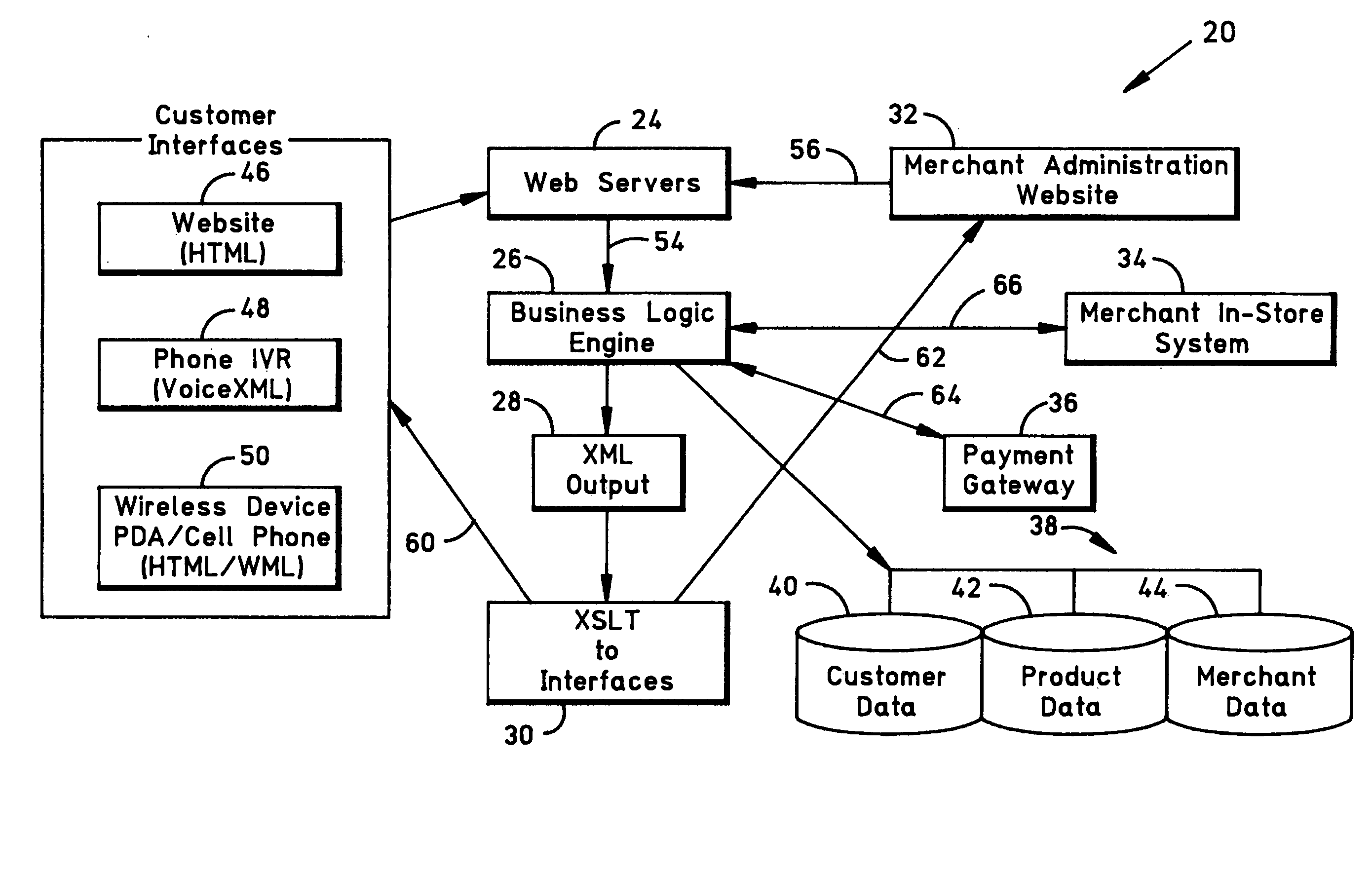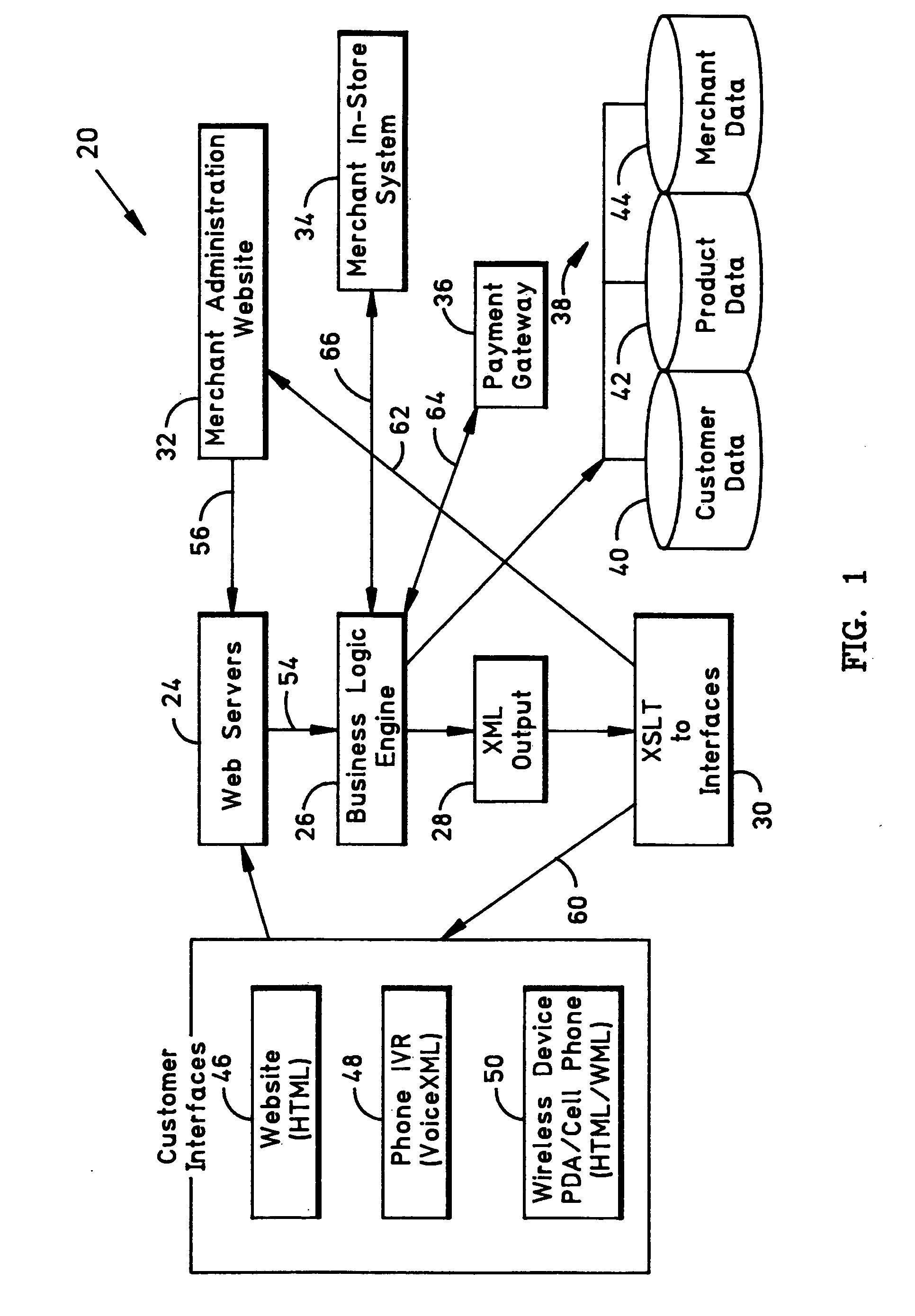Food order fulfillment system deploying a universal in-store point-of-sale (POS) for preparation and pickup scheduling
a fulfillment system and in-store point-of-sale technology, applied in the field of food order processing systems, can solve the problems of insufficient acceptance of business methods in restaurant art, inability to meet customer requirements, so as to eliminate fulfillment delays
- Summary
- Abstract
- Description
- Claims
- Application Information
AI Technical Summary
Benefits of technology
Problems solved by technology
Method used
Image
Examples
Embodiment Construction
[0030] Introduction:
[0031] The food order fulfillment system ofthis invention addresses the need for a cost-effective order processing method that can be easily configured, installed and operated by many different merchants to accept remote orders from their customers (herein denominated “users”). For example, the unpredictable order completion time problem is resolved by allowing each merchant to commit to a static order preparation time, which is used to generate an exact pickup time for both the user and food vendor staff. With these problems resolved, system users (customers) know exactly how far in advance they need to place an order, which advance time is often much less than required for existing remote-ordering systems. In practice, most merchants require only 10 to 15 minutes advance notice of food orders, permitting users to order in the office or home just before leaving to pick-up the order, thereby eliminating most reasons for order cancellation or modification by the ...
PUM
 Login to View More
Login to View More Abstract
Description
Claims
Application Information
 Login to View More
Login to View More - R&D
- Intellectual Property
- Life Sciences
- Materials
- Tech Scout
- Unparalleled Data Quality
- Higher Quality Content
- 60% Fewer Hallucinations
Browse by: Latest US Patents, China's latest patents, Technical Efficacy Thesaurus, Application Domain, Technology Topic, Popular Technical Reports.
© 2025 PatSnap. All rights reserved.Legal|Privacy policy|Modern Slavery Act Transparency Statement|Sitemap|About US| Contact US: help@patsnap.com



